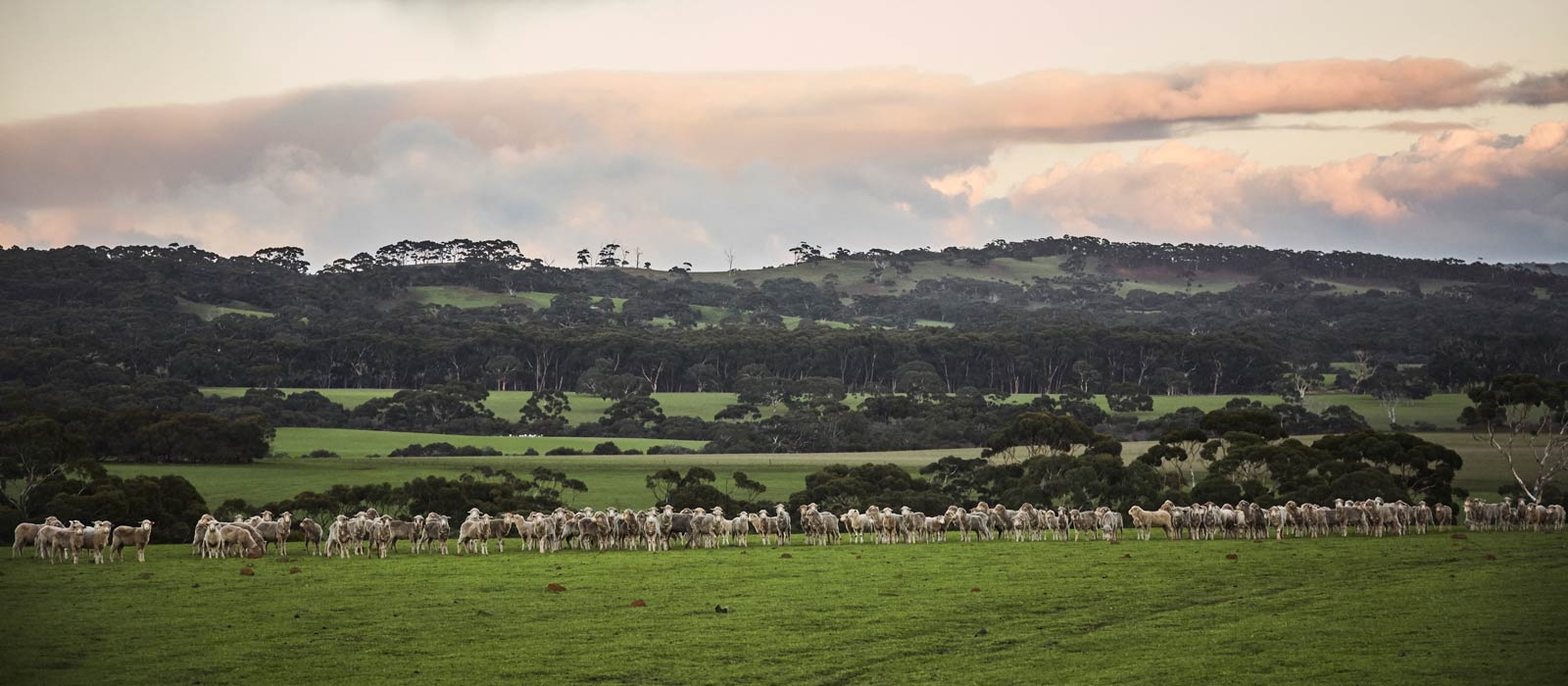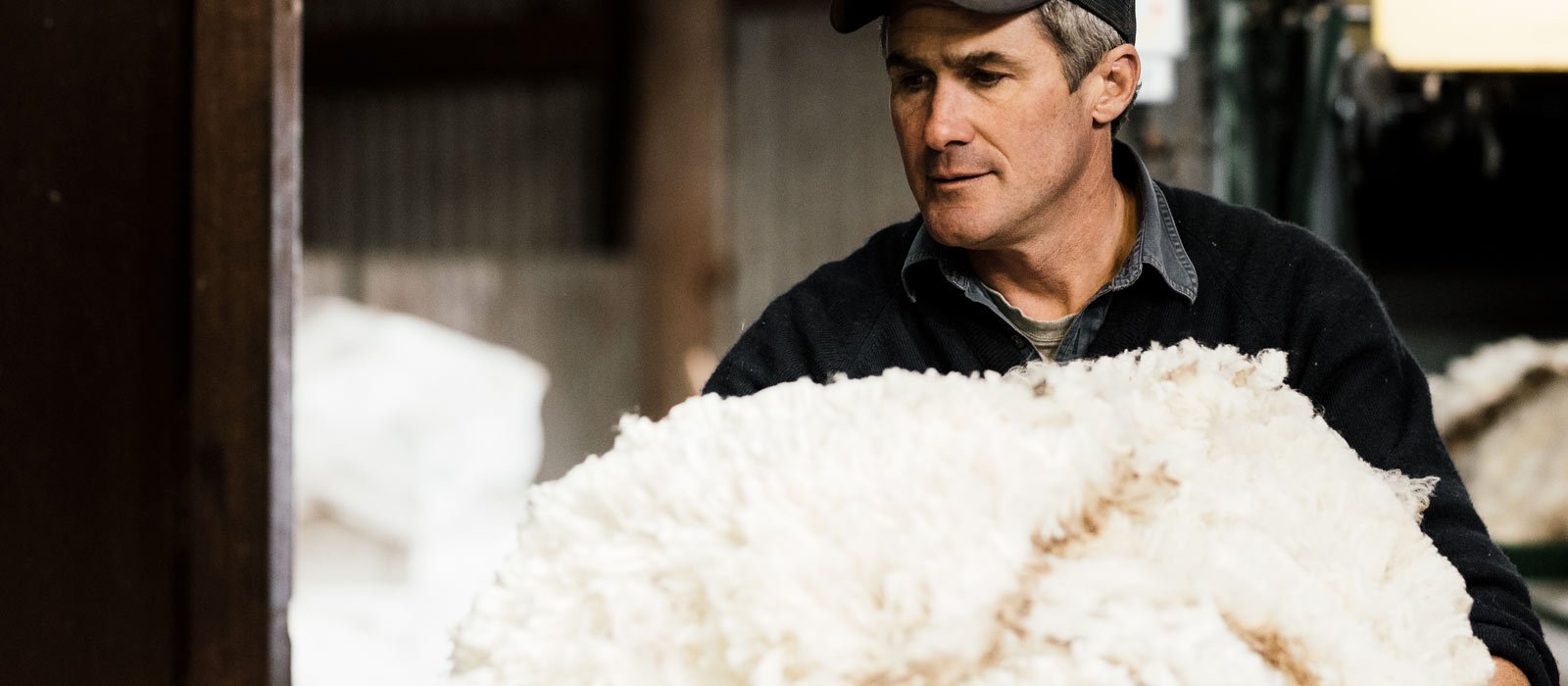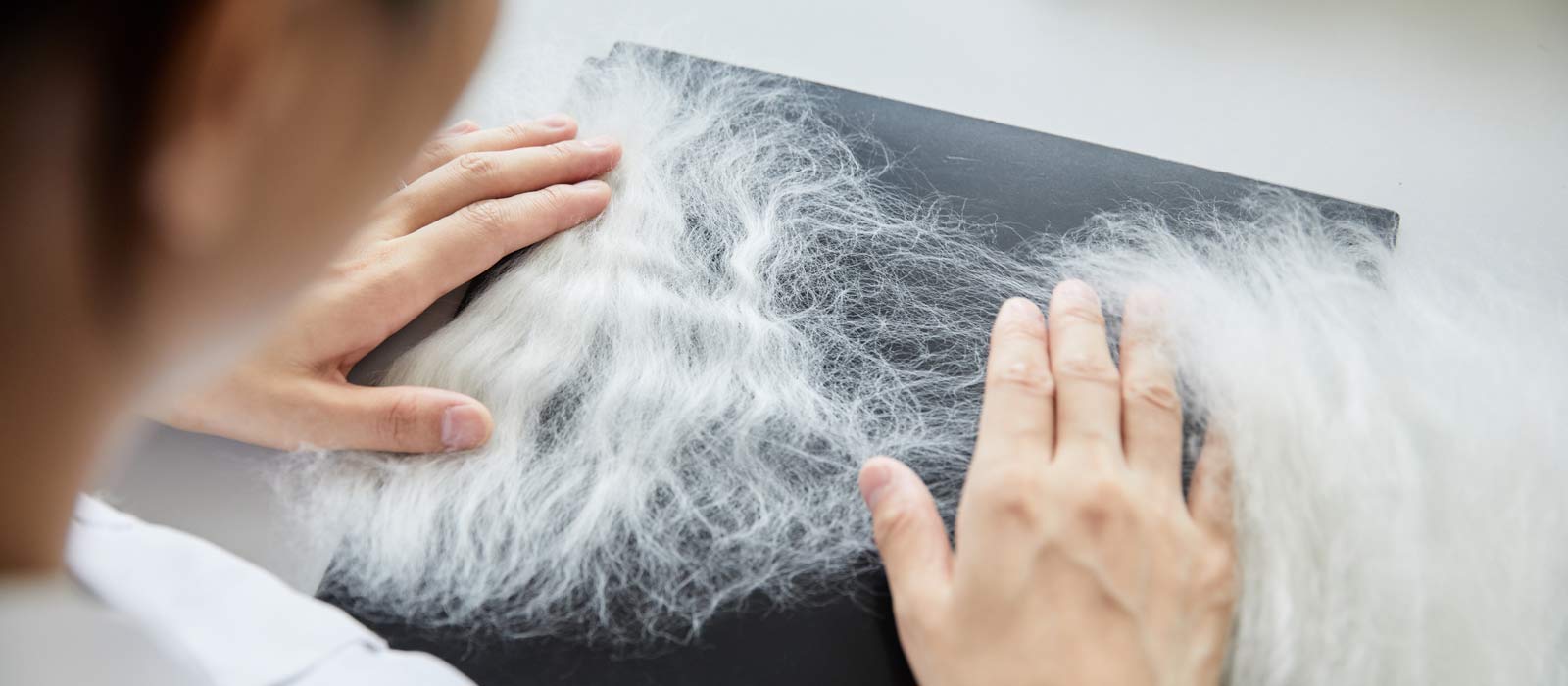Australian Merino wool is the world’s finest and softest wool in the world. Its natural benefits are so great that no other fibre - natural or man-made - can match it.
Australia also produces other types of wool, suitable for products such as wool bedding and home interiors, but it’s Merino wool that is most-suited for luxury clothing, high-performance sportswear and next-to-skin apparel.
Fashion designers love this unique fibre for its quality and versatility - nothing else feels like Merino wool, looks like Merino wool, or wears like Merino wool.
メリノウールは、オーストラリア全土の牧羊場で年間を通して、メリノ種の羊から生産される天然繊維です。

How is Merino wool made?
Australian woolgrowers produce the world’s finest wool from Merino sheep using sustainable farming practices. Unlike synthetics which are industrially produced from non-renewable fossil energy, Merino wool is a natural fibre grown year-round by Merino sheep, consuming a simple blend of natural ingredients including sunshine, water, fresh air and grass. Every year these sheep produce new fleece, making wool a completely renewable fibre.
Arguably the oldest-known animal fibre, wool is composed of a natural protein called keratin - the same protein found in human hair - with a small amount of calcium, sodium and fat. The surface of each fibre is covered in scales, which are important in making felts and traditional woollen cloths.

What are the different types of wool?
Some wool is softer than cashmere, while others are hardier and more resilient, suitable for carpets and bedding. Wool can be divided into three main categories, based on the micron (diameter) of each fibre. One micron is equal to one millionth of a metre and fibre length is recorded in millimetres – these are the main measurements which determine the quality and use of the wool.
- Fine: Wool with the finest micron comes from Merino sheep and is used for high-quality, soft-handling fabrics and knitting yarns. Fine wool is highly valued by the world’s leading fashion houses and is the hero ingredient of many Woolmark collaborations.
- Medium: Medium micron wool can be produced from a type of Merino or produced by crossing one breed with another (crossbreeding). Medium wools are used in a variety of woven apparel cloths, knitting yarns and furnishings.
- Broad: Many different sheep breeds produce broader wools. Often these breeds are known as dual-purpose breeds because they are farmed with equal emphasis on meat and wool. Broad wool is useful for products such as carpets because of its strength and durability
The average micron of human hair is between 50 to 100 micron. Merino wool is generally less than 22 micron, which shows just how soft this premium fibre is.
メリノウールはカシミアより柔らかく、シルクより滑らかであることもあります。

Merino wool versus cashmere
Wool – along with alpaca and cashmere – has a unique scale structure, with differing patterns depending on the animal which they come from. Cellulosic fibres – cotton, silk and linen – and synthetic fibres such as polyester do not have these unique scales. These scales are important for protection, felting behaviour and the handle of finished products such as apparel. They also provide a natural water-resistant surface.
- Merino wool comes from Merino sheep – the breed of sheep offering the finest wool for luxury apparel and technical sportswear.
- Cashmere comes from the hair of goats.
- Years of innovative breeding have resulted in some ultrafine Merino wools to be naturally even finer than cashmere.
- The world’s best Merino wool comes from Australia, which provides 81% of the world’s superfine wool, from woolgrowers who employ sustainable farming practices.
- Cashmere primarily comes from Mongolia and China.
- One sheep provides about 4.5 kilograms of wool fleece, whereas one goat provides only 0.2-0.3 kilograms of cashmere down fibres.
- Merino wool is very easy to care for, with many wool clothes able to be washed in the washing machine.

ウール洗いは簡単
一般的なお手入れ
洗濯方法に関係なく、ウール衣料は裏返して洗濯すること をお勧めします。そうすることで、新品時の風合いをより長く保つことができます。色移りを避けるために、濃い色と薄い色の衣類を洗濯前に分けてください。また、濡れている状態で濃い色と薄い色の衣類を一緒にしないでください。ウール衣料を洗濯する際には、他にも一般的な取扱表示に従う必要があります。